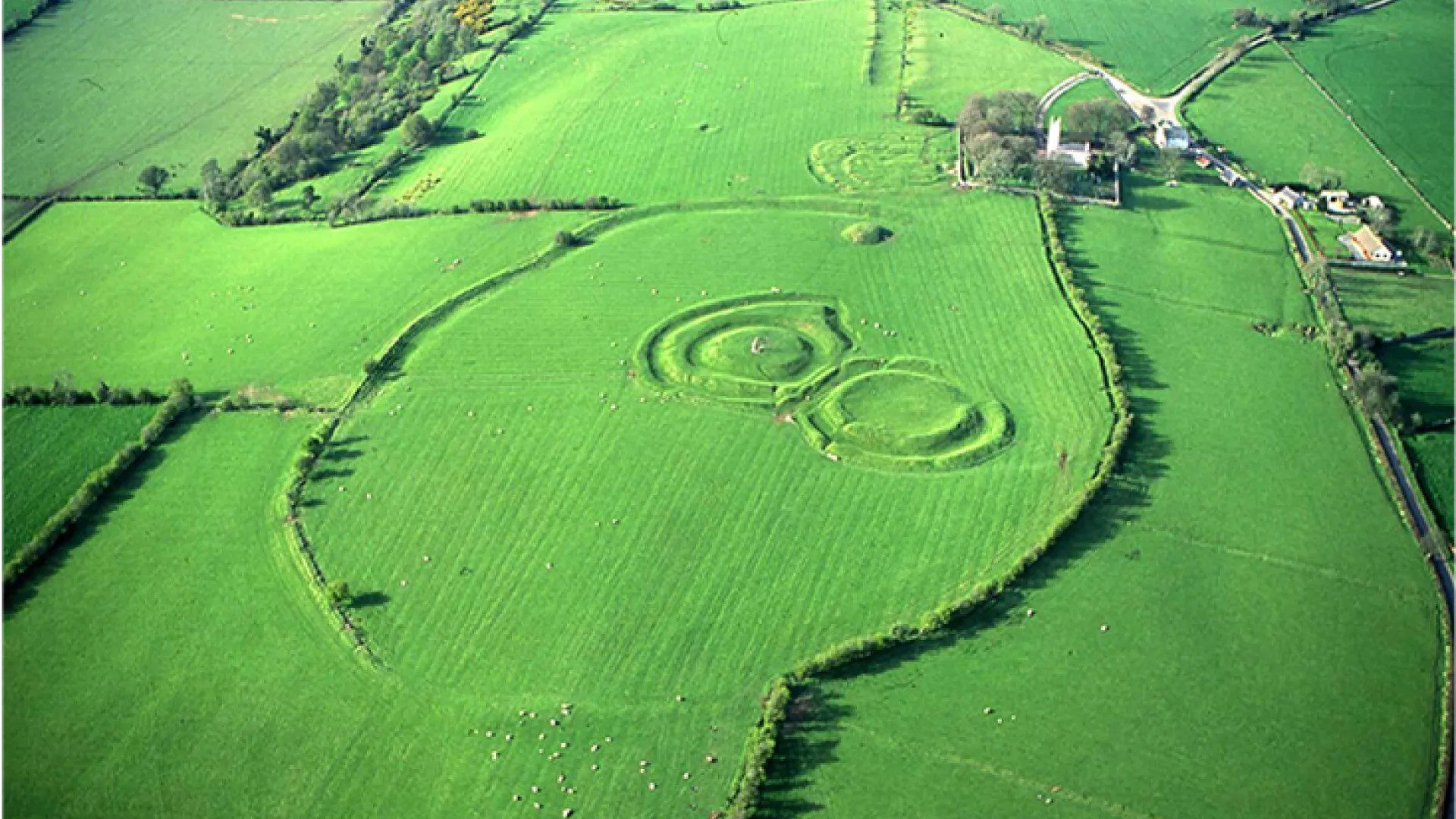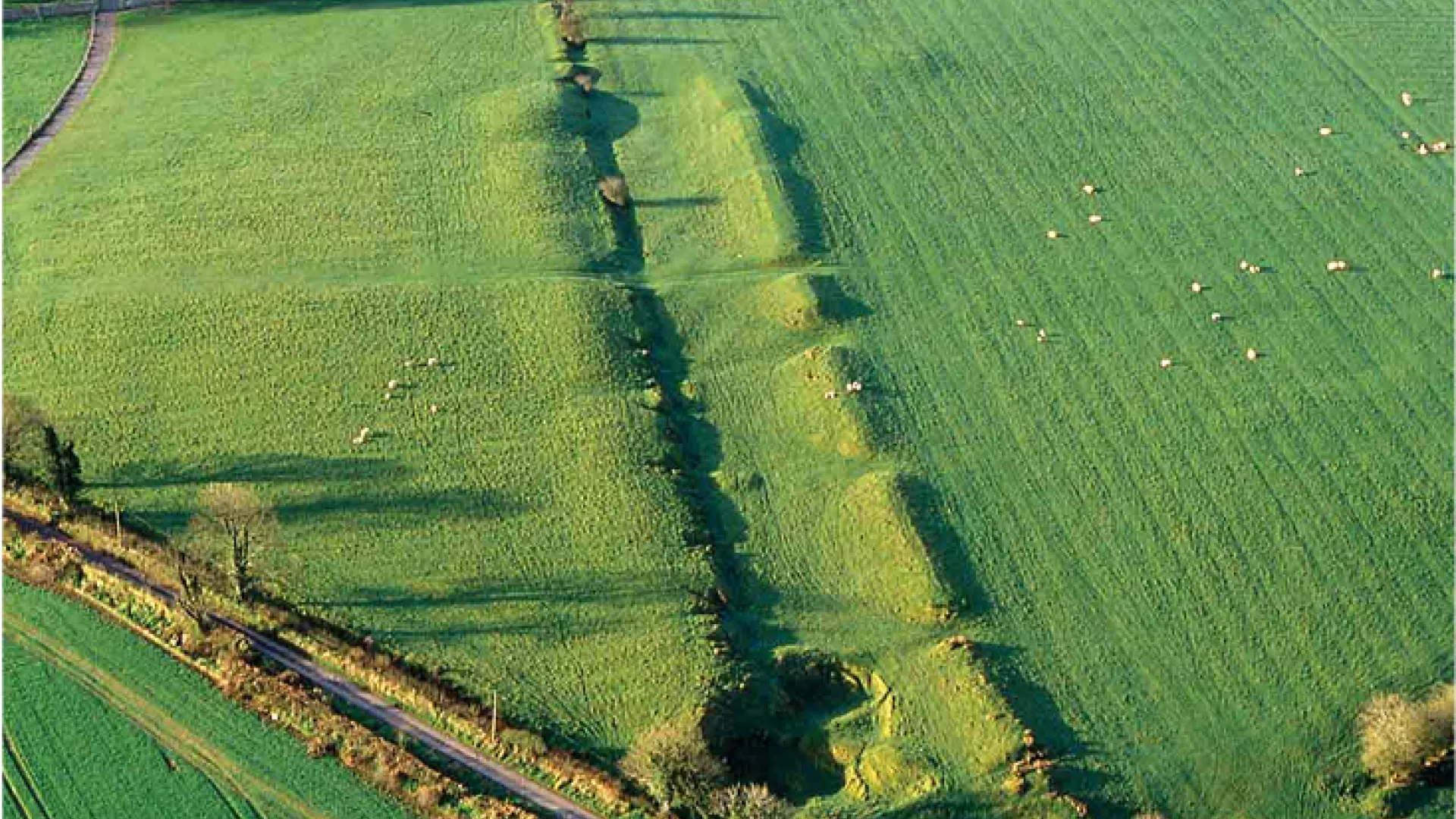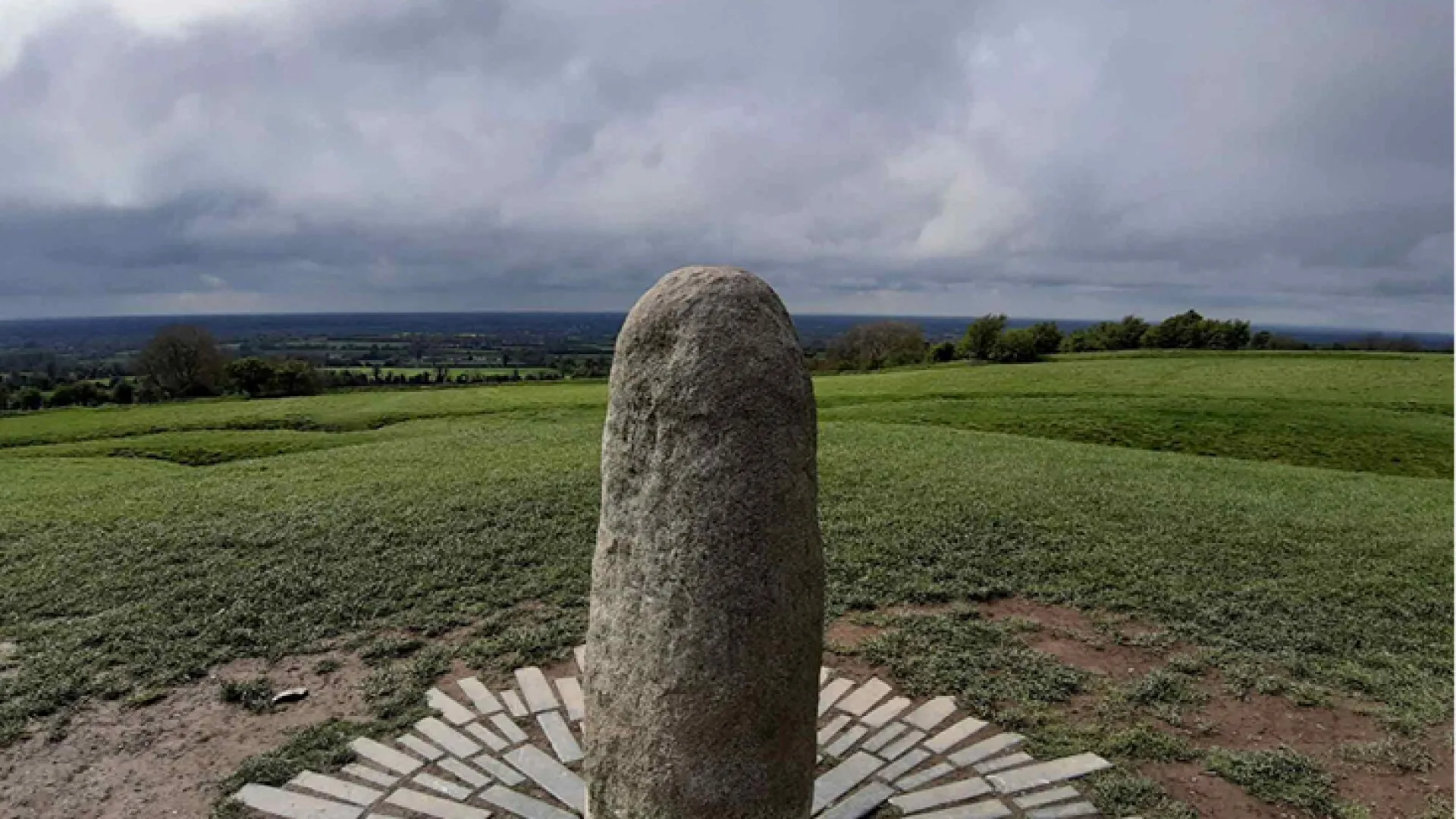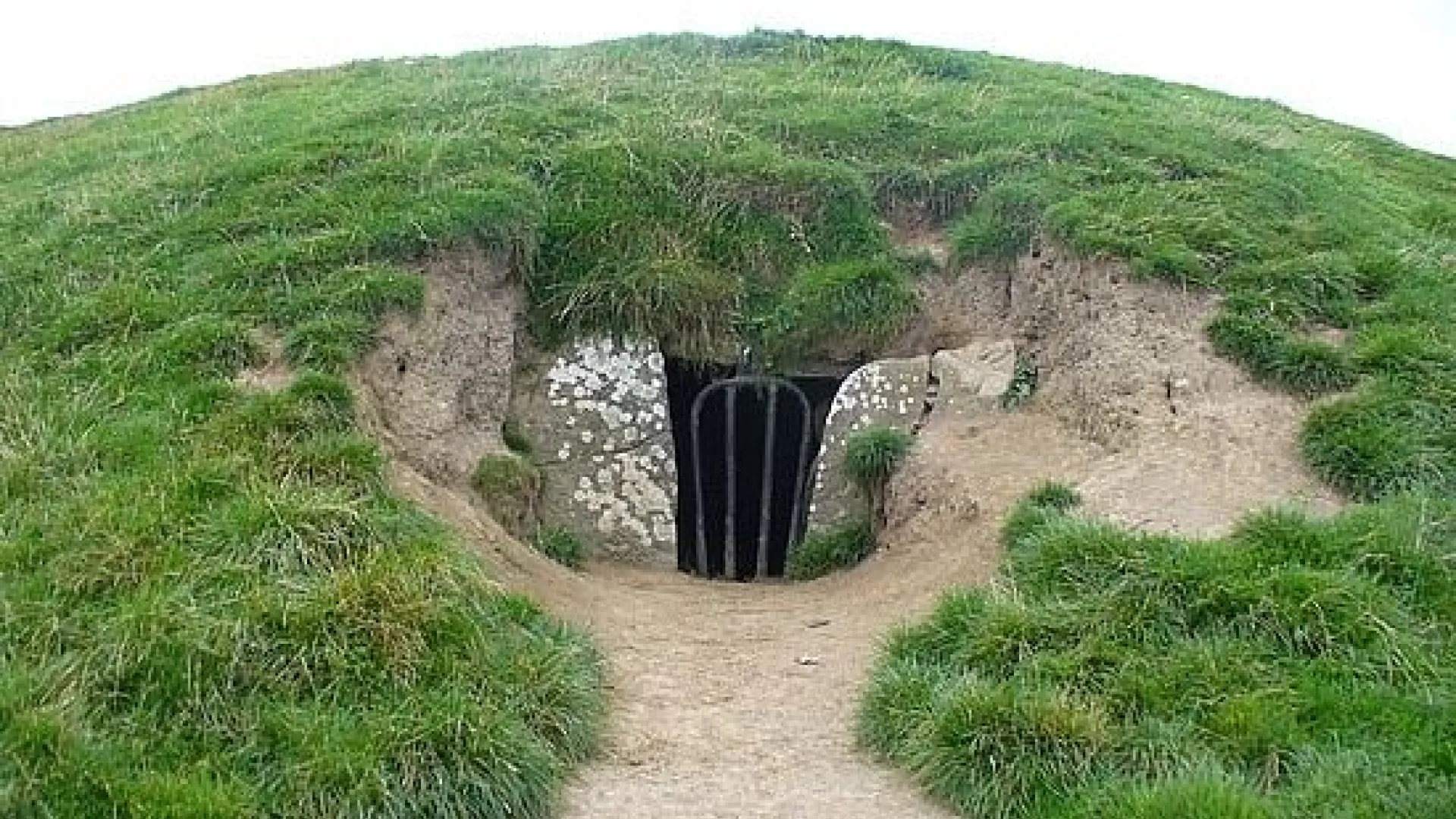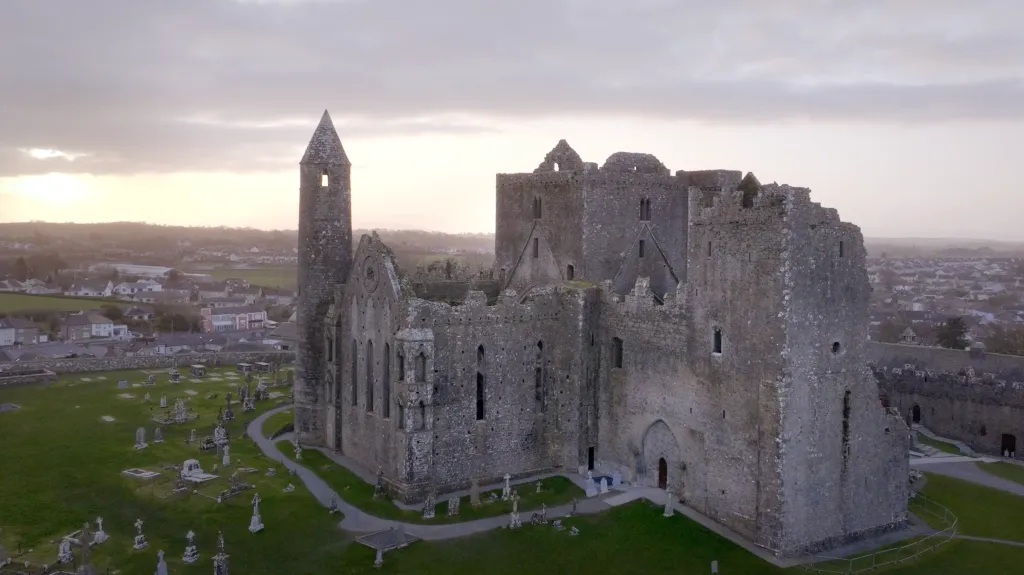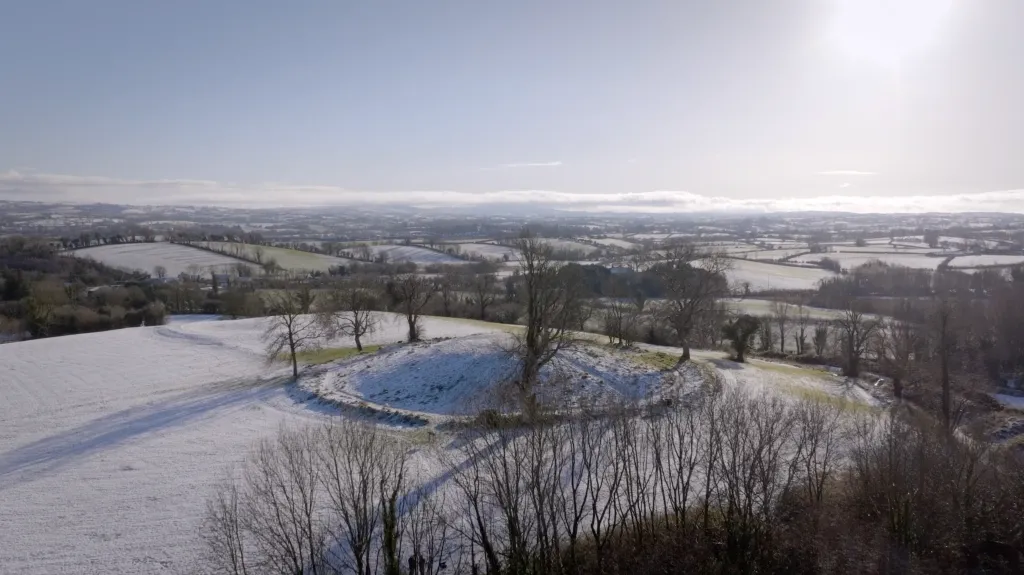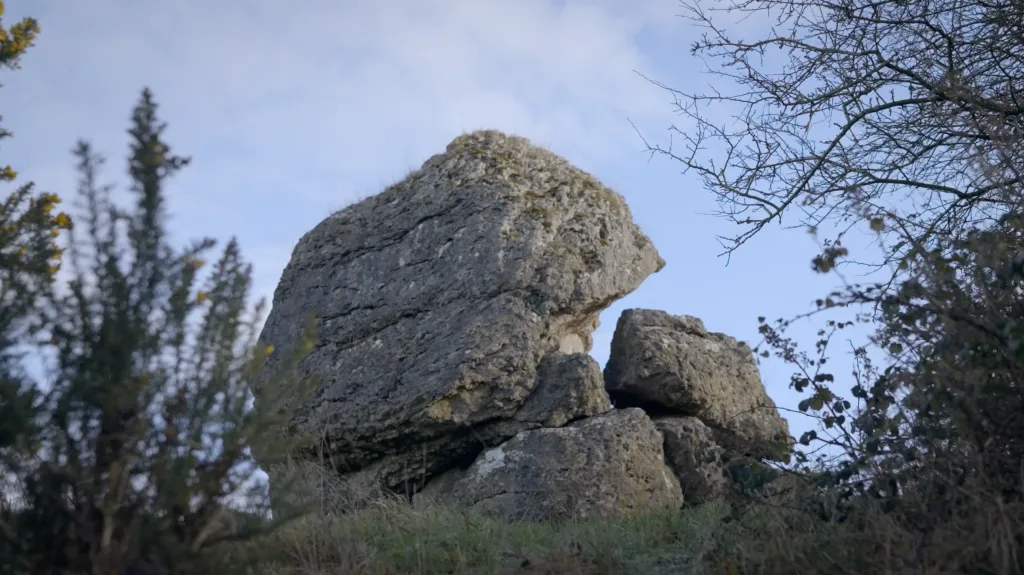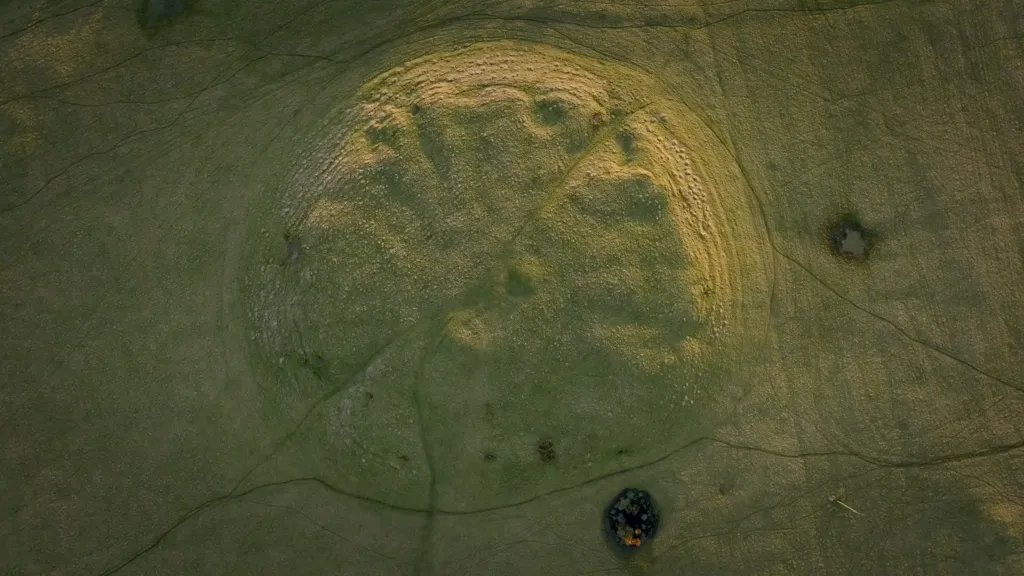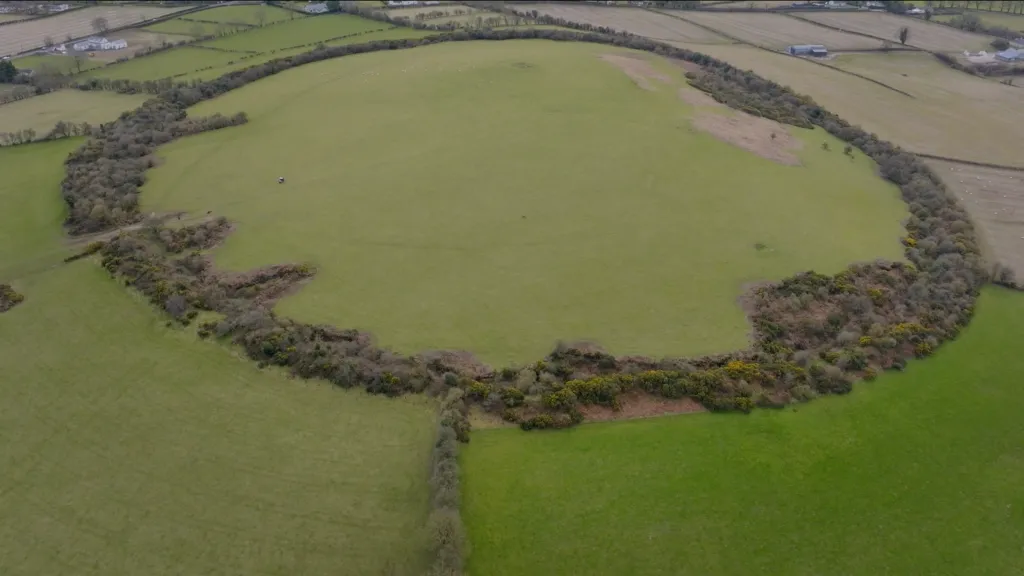The Hill of Tara sites on a north-south limestone ridge two kilometres long and has extensive distant views as well as being prominent in the landscape. Over 30 monuments are visible on the Hill and many more are known as the result of detailed geophysical survey. The Hill of Tara has been important since the late Stone Age, when a passage tomb was built near its summit. However, it was during the Iron Age and into the Early Christian Period when it established its prominence as the seat of the high kings of Ireland.
The oldest monument on the Hill of Tara is the Mound of the Hostages, a Neolithic passage tomb, subsequently reused as a burial mound during the Bronze Age. To the north is the Banqueting Hall, probably a ceremonial avenue to the summit of the hill. A large bank with internal ditch formed a ceremonial enclosure around the top of the hill during the Iron Age. The standing stone called the Lia Fáil (the stone of destiny) was traditionally associated with the inauguration of a king. To the north-west is Ráith Gráinne, the largest of a complicated series of burial monuments known as ring-barrows

Neolithic – Early Medieval Period
KEY FEATURES
There have been excavations on the Hill and extensive geophysical surveys undertaken to understand its archaeological features. The landscape surrounding the hill is also thickly populated with ritual and funerary sites. The known features on the hill span from the Neolithic period to the early medieval and from the 12th century CE at least, there was a Christian church on the hill.
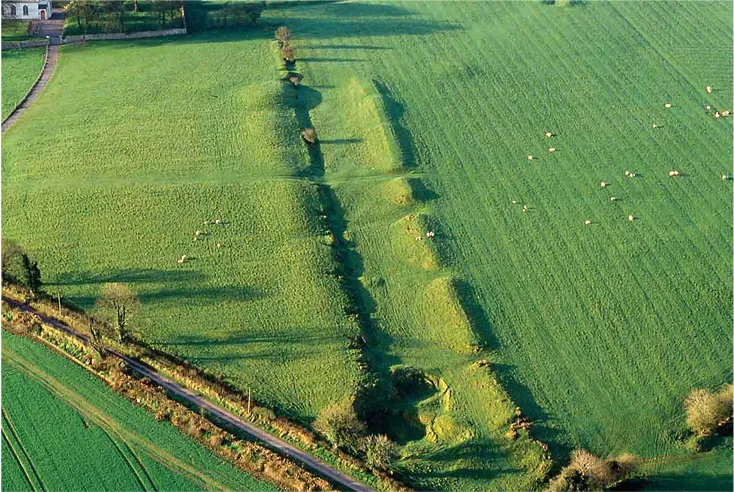
The Banqueting Hall
The hilltop was probably approached via two cursus-like earthworks forming a ceremonial route between the parallel banks. Their locations mean that the views of the surrounding landscape were restricted, and only at the summit was the full ritual landscape revealed. The Banqueting hall earthworks are aligned with the Mound of the Hostages and may date from the Neolithic phase.
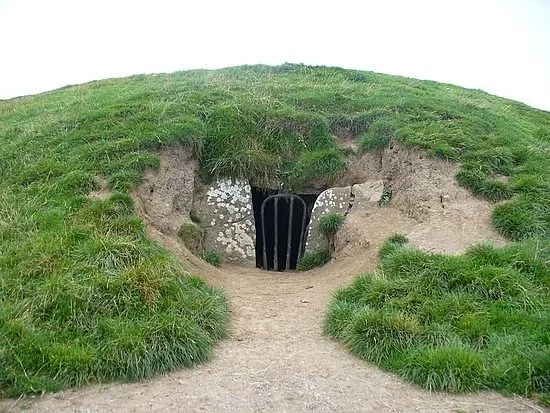
The Mound of the Hostages
This Neolithic passage tomb, also known as Dúma na nGiall, is the oldest known monument on the hill of Tara. It consists of a passage with chambers for holding cremated remains of the dead. Like Newgrange, its builders had knowledge of astronomy and its passageway is illumined by the sunrise at Lúnasa and Imbolc.
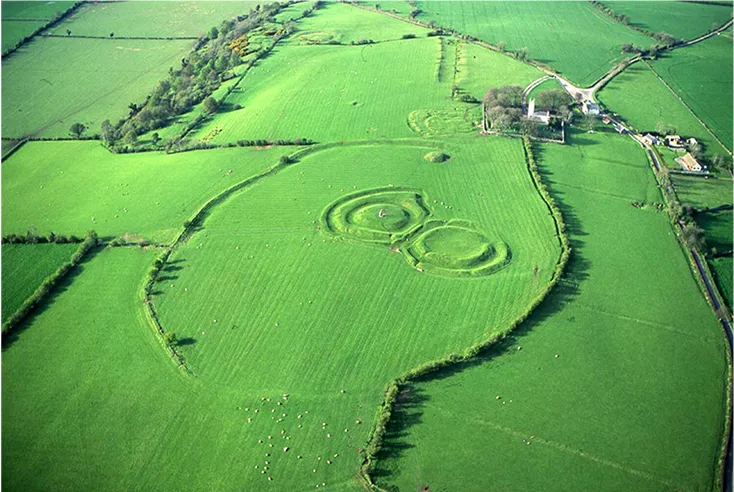
The Rath of the Synods
The Rath of the Synods is a quadrivallate enclosure, meaning it has four circular earthen banks with ditches. Evidence of habitation dates from the 3rd or 4th century AD however it was the site of an earlier cemetery underneath which may date from the late Iron age (first and second century AD). Excavations here uncovered a large number of artefacts which originated from the Roman world. Evidence of an earlier Neolitihc or Bronze age henge enclosing the Rath of the Synods and Mound of the hostages was discovered through geophysical survey.
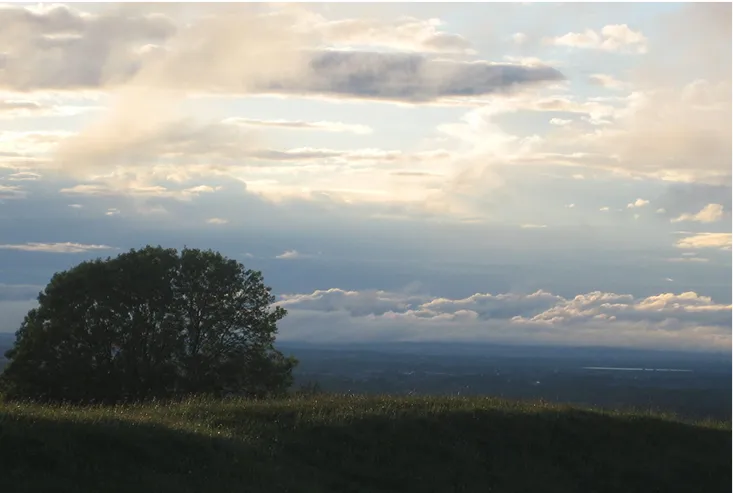
Rath na Rí enclosure
This is the largest visible enclosure on Tara and dates from the Iron Age, around 100BC. It is oval in shape, enclosing the top of the hill for a distance of 1000m and is formed of a deep internal ditch and large external bank. A timber palisade was located on the internal side of the ditch and this is understood to be have been a non-defensive ceremonial structure.
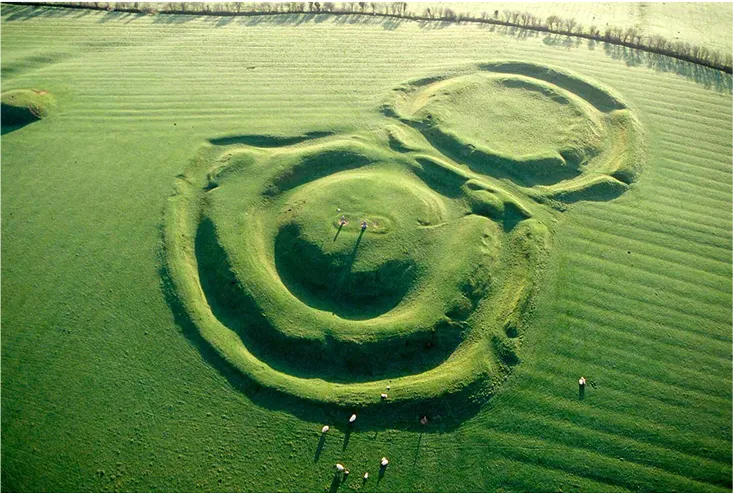
The Forradh and Teach Cormaic
Within the Ráith na Rig is the Forradh, a flat-topped mound with the Lia Fáil, or ‘Stone of Destiny’ to its north. The Forradh is 36m in diameter, situated within a bivallate enclosure, and abutted by the Teach Cormaic enclosure. Similar conjoined earthworks are seen at other Royal Sites such as Uisneach and Rathcroghan. These features are associated with the inauguration of the medieval High Kings at Tara.
Visit Hill of Tara
Accessible All Year RoundFree
Dunsany, Navan,
Co. Meath C15 P44W
Other Royal Sites
